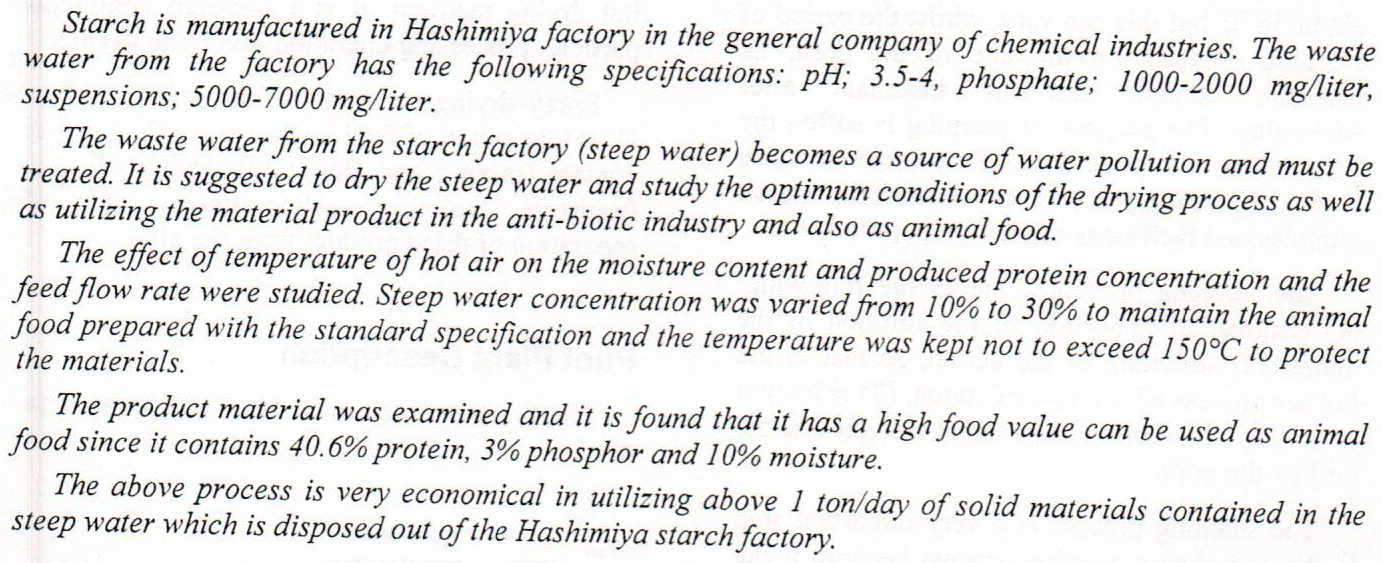
Evidences indicate that human beings were preoccupied with extreme forms of mental and psychic experiences long before they were recorded in literature. Greek myths and legends appear to include symbolizations of delusions, mania, and other bizarre forms of thought and behaviuor. The figure of the mad man or woman is analogous to the wild man, or the imaginary being who appears in various forms throughout western literature and art. Various studies refer to the notion of the wild man as a response to a persistent psychological urge. This urge gives an external expression and a valid form to the impulses of reckless physical self-assertion which is believed to be hidden in all of us, but is normally kept under control. Such impulses were exp
... Show MoreUltrasonic extraction is an inexpensive, simple and efficient alternative to conventional extraction techniques, as compared with other novel extraction techniques such as microwave-assisted extraction & supercritical fluid extraction techniques, the ultrasound apparatus is cheaper and its operation is easier. Ultrasound assisted extraction has risen rapidly in the latest decade, and for most applications it has proven to be effective compared to traditional extraction techniques. In this paper, a method of ultrasonic-assisted extraction was used to extract Inulin from tubers of Jerusalem artichoke, which have been reported to have several medicinal properties and uses. Inulin is a storage carbohydrate found in many plants especially
... Show More (4)
(4)
 (4)
(4)
 (4)
(4)
The electrical properties of the AlNiCo thin films with thickness (1000oA) deposited on glass substrates using Ion – Beam sputtering (IBS) technique under vacuum <10-6 torr have been studied . Also it studied the effect of annealing temperature from this films , It is found that the effective energy decrease with increase of temperature and the conductivity decrease with increase temperature 323oK but after this degree the conductivity increasing .
In the present work a modification was made on three equations to represent the
experiment data which results for Iraqi petroleum and natural asphalt. The equations
have been developed for estimating the chemical composition and physical properties
of asphalt cement at different temperature and aging time. The standard deviations of
all equations were calculated.
The modified correlation related to the aging time and temperature with penetration
index and durability index of aged petroleum and natural asphalts were developed.
The first equation represents the relationship between the durability index with aging
time and temperature.
loge(DI)=a1+0.0123(2loge T
... Show MoreBackground: The quality of drinking water is directly related to community health. Therefore, improving the quality of drinking reflects positively on the health situation in general. The studies that deal with the quality of drinking water in the city of Baghdad in terms of chemical or microbial content are very scanty. Objective: The current review highlights the most important studies and research articles that concern the quality of drinking water, both bottled water and tap water, in terms of chemical and biological contamination and chemophysical specifications for drinking water. Abstract: Studies have shown that drinking water in the city of Baghdad, especially tap water, contains certain levels of heavy metals,
... Show More (3)
(3)
 (1)
(1)
Recently, a great rise in the population and fast manufacturing processes were noticed. These processes release significant magnitudes of waste. These wastes occupied a notable ground region, generating big issues for the earth and the environment. To enhance the geotechnical properties of fine-grained soil, a sequence of research projects in the lab were conducted to analyze the impacts of adding sludge waste (SW). The tests were done on both natural and mixed soil with SW at various proportions (2%, 4%, 6%, 8%, and 10%) based on the dry mass of the soil used. The experiments conducted focused on consistency, compaction, and shear strength. With the addition of 10% of SW, the values of LL and PI decreased by 29.7% and 3
... Show More (2)
(2)
Assume that G ≅ HN the Harada–Norton group. In this paper, effective investment for the graph ΓRI HN standard features to acquire meaningful algebraic results for the graph ΓRI HN and its corresponding group HN. For instance, marketing a modern methods to understand the way of create a precise small subgroups in G. Furthermore, performing a full investigation for getting particular ΓRI HN parameters.
